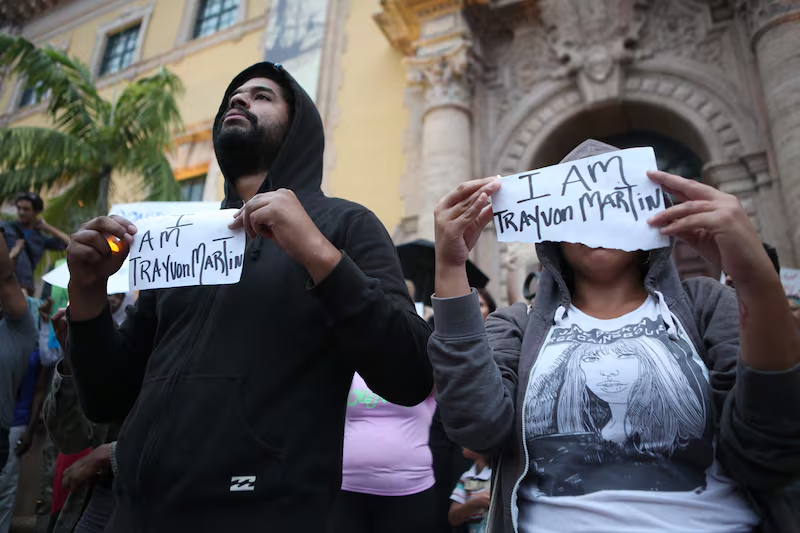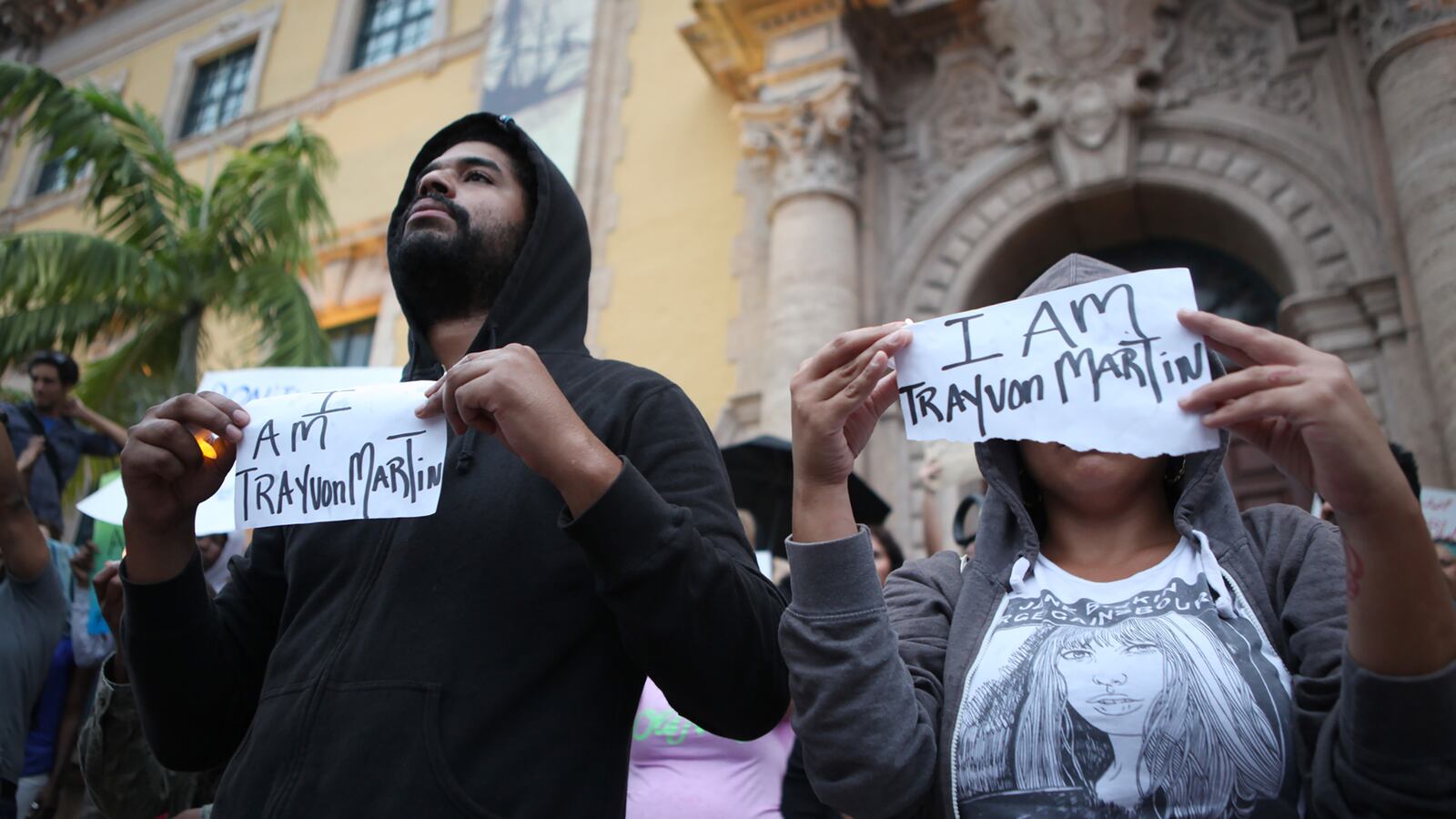Last week, in Chicago, 16-year-old Darryl Green was found dead in the yard of an abandoned home. He was killed, relatives reported, because he refused to join a gang. Unlike most tragedies, however—which remain local news—this one caught the attention of conservative activist Ben Shapiro, an editor for Breitbart News. Using the hashtag “#justicefordarryl,” Shaprio tweeted and publicized the details of Green’s murder. But this wasn’t a call for help and assistance for Green’s family, rather, it was his response to wide outrage over Saturday’s decision in the case of George Zimmerman, where a Florida jury judged him “not guilty” of second-degree murder or manslaughter in the killing of Trayvon Martin.

Shapiro, echoing many other conservatives, is angry over the perceived politicization of the Zimmerman trial, and believes that activists have ”injected” race into the discussion, as if there’s nothing racial already within the criminal-justice system. Indeed, he echoes many conservatives when he complains that media attention had everything to do with Zimmerman’s race. If he were black, the argument goes, no one would care. And so, Shapiro found the sad story of Darryl Green, and promoted it as an example of the “black-on-black” crime that, he believes, goes ignored. Or, as he tweets, “49% of murder victims are black men. 93% of those are killed by other blacks. Media don’t care. Obama doesn’t care. #JusticeForDarryl.”
The idea that “black-on-black” crime is the real story in Martin’s killing isn’t a novel one. In addition to Shapiro, you’ll hear the argument from conservative African-American activists like Crystal White, as well as people outside the media, like Zimmerman defense attorney Mark O’Mara, who said that his client “never would have been charged with a crime” if he were black.
(It’s worth noting, here, that Zimmerman wasn’t charged with a crime. At least, not at first. It took six weeks of protest and pressure for Sanford police to revisit the killing and bring charges against him. Indeed, in the beginning, Martin’s cause had less to do with the identity of the shooter and everything to do with the appalling disinterest of the local police department.)
But there’s a huge problem with attempt to shift the conversation: There’s no such thing as “black-on-black” crime. Yes, from 1976 to 2005, 94 percent of black victims were killed by black offenders, but that racial exclusivity was also true for white victims of violent crime—86 percent were killed by white offenders. Indeed, for the large majority of crimes, you’ll find that victims and offenders share a racial identity, or have some prior relationship to each other.
What Shapiro and others miss about crime, in general, is that it’s driven by opportunism and proximity; If African-Americans are more likely to be robbed, or injured, or killed by other African-Americans, it’s because they tend to live in the same neighborhoods as each other. Residential statistics bear this out (PDF); blacks are still more likely to live near each other or other minority groups than they are to whites. And of course, the reverse holds as well—whites are much more likely to live near other whites than they are to minorities and African-Americans in particular.
Nor are African-Americans especially criminal. If they were, you would still see high rates of crime among blacks, even as the nation sees a historic decline in criminal offenses. Instead, crime rates among African-Americans, and black youth in particular, have taken a sharp drop. In Washington, D.C., for example, fewer than 10 percent of black youth are in a gang, have sold drugs, have carried a gun, or have stolen more than $100 in goods.
Overall, figures from a variety of institutions—including the Federal Bureau of Investigation and the Bureau of Justice Statistics—show that among black youth, rates of robbery and serious property offenses are at their lowest rates in 40 years, as are rates of violent crime and victimization. And while it’s true that young black men are a disproportionate share of the nation’s murder victims, it’s hard to disentangle this from the stew of hyper-segregation (often a result of deliberate policies), entrenched poverty, and nonexistent economic opportunities that characterizes a substantial number of black communities. Hence the countless inner-city anti-violence groups that focus on creating opportunity for young, disadvantaged African-Americans, through education, mentoring, and community programs. Blacks care intensely about the violence that happens in their communities. After all, they have to live with it.
“Black-on-black crime” has been part of the American lexicon for decades, but as a specific phenomenon, it’s no more real than “white-on-white crime.” Unlike the latter, however, the idea of “black-on-black crime” taps into specific fears around black masculinity and black criminality—the same fears that, in Florida, led George Zimmerman to focus his attention on Trayvon Martin, and in New York, continue to justify Michael Bloomberg’s campaign of police harassment against young black men in New York City.
Indeed, these fears are the reason that—in predominantly African-American neighborhoods across the country—police gathered and waited. There might be riots, observers said, and we have to be prepared. Why? The protests in support of Martin have been peaceful, and no one has called for violence or retribution. But that doesn’t matter.
America is afraid of black people, and that’s especially true—it seems—when it thinks they might be angry.





